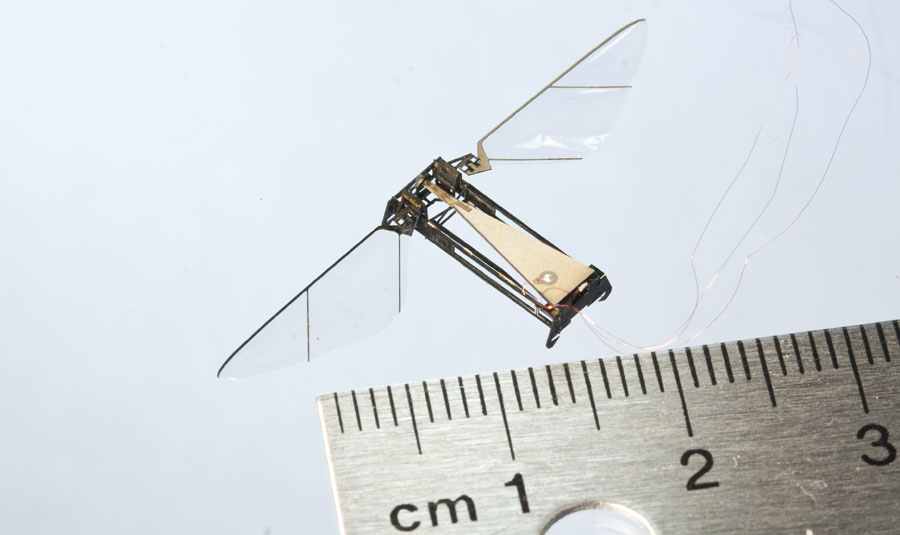Scientists have created an improved version of the RoboBee that can fly, dive into water and hop back into the air
The machine measures only two centimeters in height and weighs about one-fifteenth the weight of a penny. For a robot that is this small, swimming in water is similar to swimming in molasses while breaking through the water’s surface is like breaking through a brick wall.
However, to solve this issue, researchers designed new mechanisms that allow the small robot to transition seamlessly from water to air. The first step required them to find the right flapping speeds for both aerial and aquatic environments. They used a combination of theoretical modeling and experimental data to determine that 220 to 300 hertz is great for aerial travel, whilst 9 to 13 hertz is the ideal speed in the water.
Once that step was done, they figured out how to make the machine break the surface tension to be able to get out of the water. For this, they discovered a two-step system:
First, the machine collects water into a buoyancy chamber as it swims to the surface; an electrolytic plate inside that chamber converts it into oxyhydrogen that provides enough extra buoyancy for the wings to pop out of the water
Second, a sparker in the chamber ignites the combustible oxyhydrogen, turning it into fuel that gives the robot the necessary boost to be able to get back into the air
Microrobots such as RoboBee could be further used for search missions, deployed to far-off places for surveillance before sending big machines to rescue people. The team hopes that their work “investigating tradeoffs like weight and surface tension can inspire future multi-functional microrobots — ones that can move on complex terrains and perform a variety of tasks.”
Source: engadget.com




